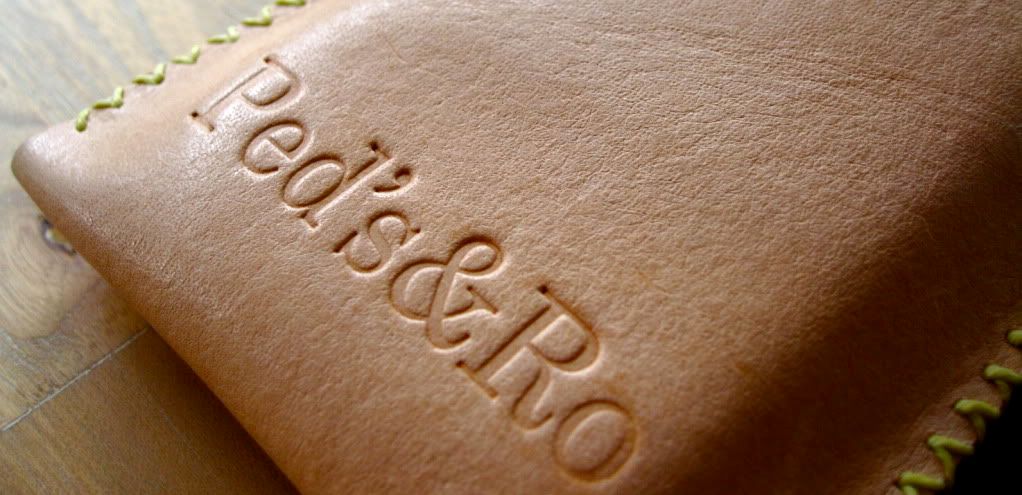There are many different types of tanning process that i can go through, but for now i'm going to just focus on the main two and briefly on a third: Vegetable-Tanning, Chrome-Tanning and Chrome-Free Tanning. This will be the most frequently seen tanning process on the everyday leather products that we buy.
Vegetable-Tanning. This is where it all began. An ancient (thought to be approx. 5000 years old or so) tanning process, this form of leather are mostly used for saddlery, carving, luggages, belts, hats, dog leashes, furniture and other products that needs leather to be easily moulded and worked with. Its greatest strength would be its toughness and flexibility. Dampen it a little and you can easily mould it to different shapes! Of course, soak it and it will lose its shape and also color. Vegetable tanning uses a natural chemical called Tannin comprising of organic materials such as tree barks and leaves and thus giving it its natural brown color. Previously taking almost a year, advancement of technology now allows approximately only (still long!) one to three months to complete the whole process.
As you can see from the majority of my leather work, vegetable-tanned leather is my preference due to its workability, naturalness, and beauty.
Vegetable-Tanning. This is where it all began. An ancient (thought to be approx. 5000 years old or so) tanning process, this form of leather are mostly used for saddlery, carving, luggages, belts, hats, dog leashes, furniture and other products that needs leather to be easily moulded and worked with. Its greatest strength would be its toughness and flexibility. Dampen it a little and you can easily mould it to different shapes! Of course, soak it and it will lose its shape and also color. Vegetable tanning uses a natural chemical called Tannin comprising of organic materials such as tree barks and leaves and thus giving it its natural brown color. Previously taking almost a year, advancement of technology now allows approximately only (still long!) one to three months to complete the whole process.
As you can see from the majority of my leather work, vegetable-tanned leather is my preference due to its workability, naturalness, and beauty.
| Vegetable-Tanned. Its texture is simply raw and natural. |
| A roll of vegetable-tanned leather at home. |
Chrome-Tanning. Moving on to a more modern take on tanning and only taking a mere day to complete the process, this modern (1950s) process is now predominantly used in the leather shoes, clothing and upholstery industry where quick turnovers and cost efficiency is important. Your leather jackets would be chrome-tanned. So would the leather in your car. This process uses chromium sulfate and other chromium salts. Once tanned, it leaves the hide with a light blue shade, hence this product is commonly called "Wet Blue" hides. It does not discolor or lose its shape when soaked in water. It is also softer to touch and more pliable, not tough or structured like its medieval counterpart. Most importantly, you can dye it into any color you want!
| Chrome-Tanned. Showing the wet-blue color at the centre. |
| Chrome-Tanned. A hide still with its fur intact. |
Synthetic-Organic Tanning (Chrome-Free). Now used in infant shoes and car upholstery, this is chrome-tanning, without the chrome! This is a more eco-friendly alternative to the usual chrome-tanning process, where synthetic or organic materials is used instead.
In the next post, i will cover the different segments of the animal hide (butt, leg, etc) and which leather products they are used in. I don't have a specific number of posts for this series but there will be plenty more coming. There are a lot to explore and understand about leather, and i myself am still learning something new everyday.

No comments:
Post a Comment